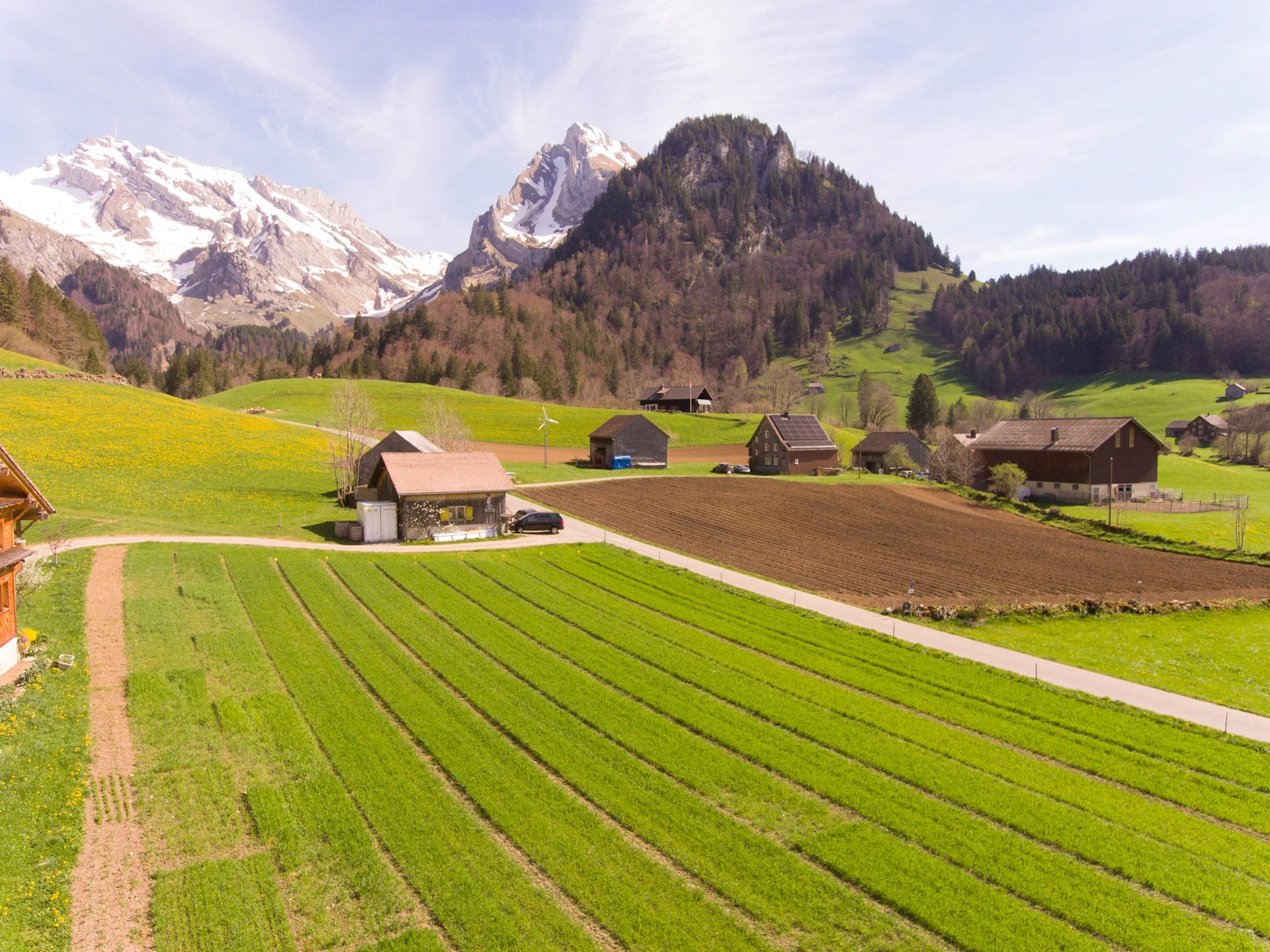
Farming
Will olives soon grow in Switzerland?
Temperatures are rising. But what does that mean for our agriculture? We take a look at the fields of the future.
navigation

Sustainability
WWF Switzerland has identified 30 foods that will sustain us in future – well-balanced for our stomachs and sustainable for our soil. Here's an introduction to some of them, with information and recipes.
Buckwheat grain is a pseudo-cereal that can be used like a real grain, for example for making pancakes which are also suitable for people with gluten intolerance.
You can find the recipe for buckwheat pancakes here
The soya bean mainly owes its popularity in Western cuisines to vegetarians and vegans. In its native Asia, however, it has been a key source of protein for billions of people for thousands of years. Like all beans, soya is toxic when raw, which is why they have to be processed. The best-known product is tofu, which is made from soya milk. Edamame – which are soya beans that are harvested whilst green and still unripe, and then cooked – are also very popular and well-known; and can be enjoyed as a snack with a bit of sea salt.
How to make crunchy kale crisps: 3 tablespoons of oil and a pinch of ‘fleur de sel’ are enough for 250 grams of kale. Distribute it evenly in a covered bowl or plastic bag and then shake well. Spread the leaves out on a baking tray and place in a preheated fan oven at 120°C for 20 minutes. Our tip: wedge a ladle in the oven door so that the leaves don’t burn.
View the recipe here
It’s mind-blowing what industrial hemp can do, despite containing virtually no THC: its fibres can be used to make clothing, rope, paper and insulation materials. The seeds contain valuable proteins and omega-3 fats which taste great in yoghurt, muesli or salads. The plant also requires little water, hardly any pesticides and grows quickly. Little wonder that this ancient plant is tipped for a big future. So how can it be used? In a vegan coconut and hemp bowl, for example. View the recipe here.
Long discarded as a poor man’s food in bourgeois Swiss kitchens, the lentil is enjoying a remarkable comeback, featuring in top-class gastronomy. In Switzerland, the cantons of Geneva and Vaud currently grow the most lentils. Migusto provides an overview of the various types of lentils, as well as plenty of inspiration for lentil dishes.
Did you know a vegan protein substitute can be made from tinned or jarred chickpea water? This liquid, known as aquafaba, can be whipped up. The trick is to add a small amount of baking powder.
Click here for instructions, together with a video
What would Bircher muesli be without oat flakes? The protein-rich cereal is also often used in cookies or, perhaps more surprisingly, in Blévita with wholemeal oat flour and sesame seeds. 100 grams contain 12 grams of protein.
Edible poppy seeds don’t come from the red poppy, but from the white and purple-coloured opium poppy. This is also a source of opium. But don’t worry, the seeds’ low morphine content is safe to eat.
Pak choi bears a remote similarity to chard, but has a slightly peppery flavour and is crunchier to the bite. While the vegetable comes from Asia originally, it’s now grown in Switzerland too. It tastes great in all sorts of Asian soups and stir-fry dishes. But it also goes well with typical Swiss ingredients such as spaetzli - for example, in an Asian one-pot spaetzli with mushrooms.
View the recipe here
The sunflower was brought to Europe from North America in the mid-16th century because of its attractive appearance. Russia began extracting oil from it some 300 years later. In Switzerland, the cultivation of the plant to produce edible oil has been subsidised by the state since 1993. Sunflower oil is rich in vitamin E.
Parsnip was a staple food in Switzerland before almost being ousted during the 18th century by the emergence of the potato. We may see this winter root vegetable on our plates more often again in future. Maybe even as a dessert in a parsnip and lemon cream?
View the recipe here
The walnut has different names in Germany and Austria to Switzerland. Perhaps the Swiss term for walnut ‘Baumnuss’ - which translates literally as ‘tree nut’ – is explained by the fact that it doesn’t grow on shrubs like its relatives, but instead on trees.
Sweetcorn is around 7,000 years old and originally comes from Mexico. Columbus introduced it to Europe in the 15th century, and today hundreds of different varieties are grown here. Sweetcorn as we know it today only emerged in the 19th century. Fresh corn on the cob has soft leaves and golden yellow kernels which can be eaten raw. If you’re cooking the whole cob, remove the leaves and silk tassels and then cook it ‘al dente’ in water.